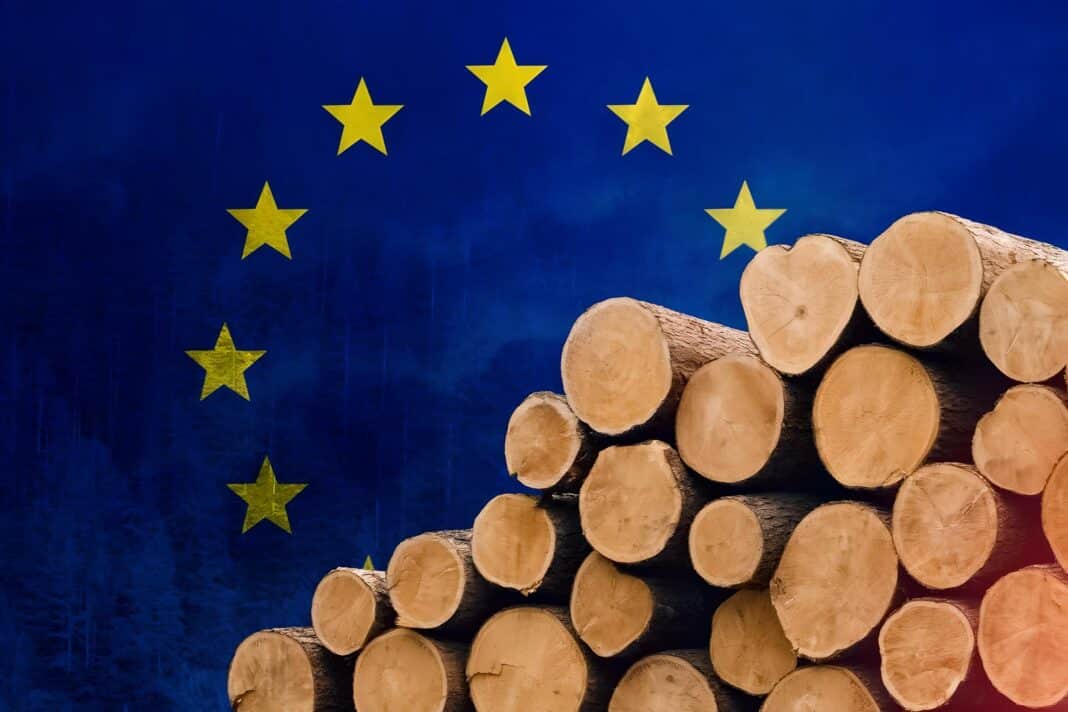More than 6 million tonnes of pulp are imported into the European Union every year, with fears that the paper and board industries are amongst the most exposed and unprepared for the EUDR, which could, in turn, lead to massive supply shortages and price hikes in European supply chains.
As a result, a large share of trade that currently enters the EU could be traded through Asia instead, “leading to an unintended increase in the use of high-deforestation-risk pulp and paper outside Europe.”
That is according to a new report published by Fast Markets overnight, showing that Europe’s reliance on imported bleached hardwood kraft (BHK) and bleached softwood kraft (BSK)—used to produce paper and board products—is triggering uncertainty among European importers.
“At first glance, the issue may not appear overly complex, considering Europe has a surplus of net trade in pulp,” Fast Markets said. “Out of all the pulp used for paper production in Europe, 60% is integrated and 40% is market pulp.” However, “the challenge lies with the pulp segment.”

Currently, Europe relies heavily on imports from Brazil, North America – which could opt out of the EUDR’s compliance requirements – and Chile to make market pulp, with its over-reliance on Brazil imports, a red flag “due to the chances of the country being classified as having a high risk of deforestation, leading to even more rigorous compliance requirements.”
Up to 50% of BHK pulp is imported into the EU, and “given the widespread use of woodchips, BSK producers face greater challenges in complying with the EUDR due to the complexities of tracing fibres back to individual forest plots,” the report said. Should these imports stop suddenly, “there would be a significant decrease in BHK pulp availability in the region.”
New rules could crunch Europe’s graphic paper market
Beyond pulp, the new rules could also significantly disrupt the graphic paper market, with the industry facing two key challenges. The first is “difficulties in obtaining enough market pulp at a reasonable price, which could increase production costs and put domestic production at risk.”
Secondly, “there is a potential for disruptions in global trade,” adding that “without changes in domestic demand or capacity, operating rates for European graphic paper could decrease by as much as 11% from our current forecast, putting even more producers at risk.”

The concerns around paper and pulp come after Wood Central revealed, in March, that EU policymakers could delay key elements of the new legislation – including the traffic light system and country-specific risk assessments, over a push by several governments in Asia, Africa and Latin America to fight back against the “burdensome and unfair” rules.
Last month, Wood Central spoke to an anonymous expert who said the compliance costs associated with adhering to current EUDR rules and regulations could balloon out to US $2.5 billion, who added that “the EUDR is unique because it is a B2B regulation set up by the EU but enforced by individual EU members.
According to the expert, it’s conceivable that exporters may need to run two separate supply chains, “one that is EUDR-ready, and the other which is not” – it’s up to exporters to “make a commercial and ethical decision whether to stay in EU supply chains.”
Yesterday, Iliana Axiotiades, head of the EU-based grain trade group Coceral, said the EU was “ill-prepared to implement its own rules.”
“Even the information system, the IT the industry will need to feed (information into) is not read,” Ms Axiotiades told delegates at an International Grains Conference in London. Asked if the EUDR will be delayed, she said: “I believe a decision will be made to take into account the lack of preparation,” adding that 20 EU members asked Brussels to scale back and possibly suspend the EUDR in March.
How the EUDR will work
- The regulation will assign regions within countries inside and outside the EU a low, standard, or high-risk level associated with deforestation and forest degradation.
- This risk classification will guide the obligations of various operators and the authorities in member states to perform inspections and controls. Consequently, this will streamline monitoring for high-risk regions and simplify due diligence processes for low-risk regions.
- Authorities responsible for these areas must inspect 9% of operators and traders dealing with products from high-risk regions, 3% from standard-risk areas, and 1% from low-risk regions. This inspection aims to confirm whether they are effectively meeting the obligations stipulated by the regulation.
- Further, these competent authorities will inspect 9% of relevant goods and products either placed on their market, made available, or exported by high-risk regions.
- Lastly, the EU plans to enhance its cooperation with partner countries, focusing primarily on high-risk areas.
For more information, visit Wood Central’s special feature on EUDR and its implications for the global supply chain of forest products from July 2023.






